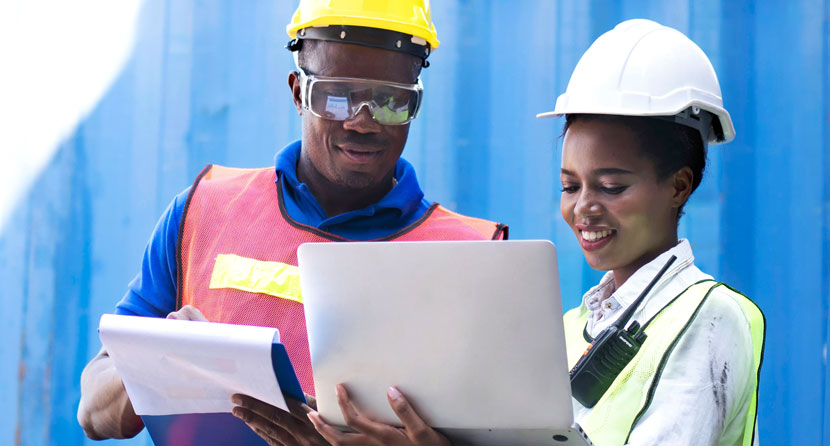
When it comes to construction and logistics projects, there’s no single solution for reducing workplace risk. However, following regular safety measures and building a culture of safety in the workplace that positively reinforces those measures, is a good place to start.
To help you get started on improving your safety performance and keeping your worksite incident-free, below are a few safety tips to follow.
1. HAVE THE RIGHT PROTECTIVE GEAR
Personal protective equipment (PPE) is critical to reducing employee exposure to hazards in and around your job site. There’s a wide range of PPE you should have and maintain at your site including:
- Eye and face protection: Thousands of workers are blinded each year from work-related eye injuries. To avoid these injuries, require your staff to wear eye and face protectors whenever they perform tasks that could cause chemicals or foreign objects to fly into their eyes, such as welding, cutting and grinding.
- Head protection: Equip your team with hard hats in areas where objects may fall. These hats need to be kept in good condition, so inspect them frequently for dents, cracks and general wear-and-tear, and replace immediately if found impacted.
- Hand and foot protection: To protect your hands, industrial-grade gloves should be worn and used for their intended task. To protect your feet, safety-toed footwear should be worn when operating heavy equipment and general wear shoes and boots should have non-slip, puncture-resistant soles.
2. KEEP EQUIPMENT IN GOOD CONDITION
There’s a range of equipment that can expose your workforce to safety hazards. While there are too many to address in this article, we can explore some of the common ones likely to be found on your job site.
- Scaffolding: 52 scaffolding-related fatalities occurred in 2020. Make sure all scaffolding is set on solid footing, checked for damage, weak links, dents or wear and tear and any issues are repaired before use. Also, remind employees to not work on scaffolds exposed to inclement weather or other dangerous conditions.
- Electrical components: Stop your crew from working on electrical circuits until all power is shut off and grounds are attached and by not letting ladders, scaffolds, equipment or materials come within 10 feet of electrical power lines. Electrical cords and cables should also be inspected throughout the job site, with frayed or damaged components replaced.
- Cranes: Electrical grounds should be used for all cranes that operate near transmitter towers to prevent mobile units in transit from colliding with live wire. Cranes should also be regularly inspected for a load chart and operators should be aware of the crane boom location at all times.
3. EVALUATE THE WORKSPACE YOU NEED
From handling heavy equipment to coordinating a large workforce, having enough space is critical to maintaining a safe job site.
- Storage containers: Keeping worksites clear of materials, equipment and debris is critical to safety. Portable storage containers help eliminate the clutter.
- Mobile office trailers: Keeping offices and break rooms in a designated and comfortable area on site, keeps your team safely out of the way while resting, reviewing plans or meeting with clients, but still close to the action.
4. VET YOUR VEHICLES
Vehicles used on construction sites see a lot of wear-and-tear that increases the likelihood of a failure. Inspect vehicles regularly to make sure they are in good condition.
Keep track of your cargo loads. Cargo that is improperly loaded and/or overloaded has a higher chance of shifting while in transit, which could cause the vehicle to tip or the driver to lose control.
Our Commitment to Safety
Safety is deeply rooted in our company culture. It’s in everything we do, from the office to the job site. This commitment is reflected in our total recordable injury rating, (TRIR) of 1.0.
WillScot Mobile Mini Experts Are Here to Help
Our experts are here to make your team as safe as possible on the job site so you can get right to work with peace of mind. For more safety tips for your industry, visit OSHA.
Whatever your project, safety is vital to every aspect of its success – from workforce well-being to regulatory compliance and productivity. Learn more about how you can make your job site safe with this handy checklist.
